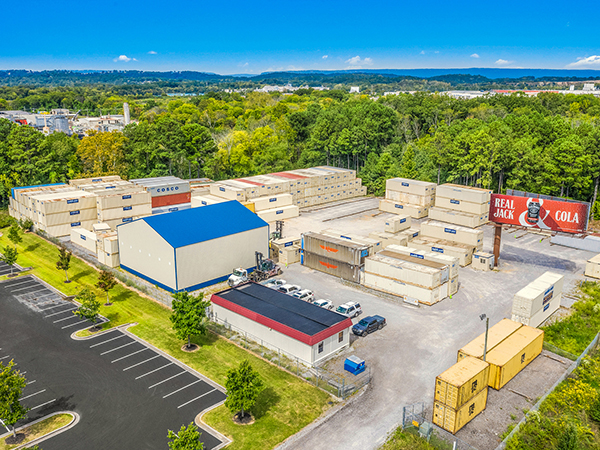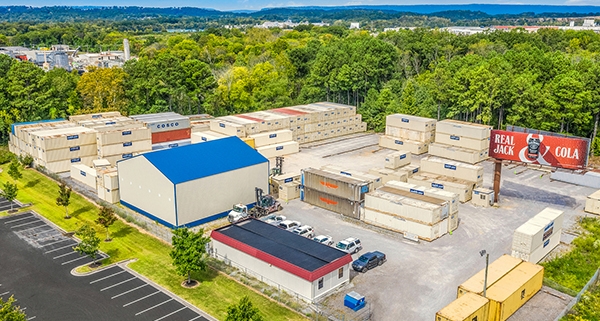
Self-Storage Success: Tips for Investing
If you are in the market to do some investing, look no further than a self-storage unit to bring in some cash. If Covid-19 taught us anything, it is that the financial world can change on a dime, but real estate investors would prefer something a little more stable. According to Bloomberg Markets, storage space is “… the number one alternative investment.” Compared to other forms of real estate investments, self-storage investing enjoys many attractive attributes: Resistant to Recession, Relatively High Returns, Opportunities for Consolidation, Lower Breakeven Occupancy Rate, Low Maintenance and Less Hassle. Owning a self-storage unit is an investment that will pay dividends without breaking the bank of time or money.
Advantages of Self-Storage Investments
A self-storage facility has many advantages. With a low overhead cost, this asset class allows for an impressive potential income. The smaller and mid-size units do not need much hands-on management, and can get by with only part time managers. A self-storage facility also does not have the challenges and headaches that a rental apartment or housing unit might have.
Month to month leases provide the ability to change rental fees more quickly, and there are so many self-storage units around, offering a big pool for investors.
With fewer moving parts to a storage unit (no bathrooms, no human tenants, no grandiose expenses), investing in a self-storage unit is a great idea for positive cash flow. They are also very stable investments, even when the economy is not, and can be used by renters in various ways. US News and World Report said, “The flexibility of self-storage facilities makes them incredibly resilient through all economic cycles because people always seem to find a use for them.” Even if the market or the world’s health is unstable, people will always find a use for their storage unit.
Purchasing Your First Self-Storage Property
Just like other commercial real estate investments, self-storage properties are listed and sold based on cap rates, which directly relate to the investments NOI. This is how much cash flow the investment produces after accounting for all expenses and income. The higher the capitalization rate, the higher return investment is likely to be achieved and the better rate of return for the investor. Prior to purchasing your first storage property, it is important to put together a cash flow analysis, looking at all expenses relating to operating the self-storage business, including:
- Management fee (at least 5% of gross rents suggested).
- Payroll (for larger facilities).
- Utilities.
- Property insurance.
- Advertising or marketing.
- Real estate taxes.
- Office supplies.
- Repairs and maintenance.
- Online software.
- Phone or internet.
- Lawn care and pest control.
- Trash service.
- Credit card processing fees.
- Miscellaneous fees.
The property should have adequate cash flow to cover all of the expenses listed above in this article and any debt service. If it is an underperforming property, it may not have enough cash flow to cover expenses and require property improvements.
Most self-storage facilities are Class B or C facilities, especially those owned by inexperienced or small-sum investors who invest minimally. Many of which older in age, need some improvements, and are not performing to standards of the market. This gives an opportunity to investors to add value by providing capital improvements, raising rents, expansion, limiting costs, and developing better management processes, among other areas of improvement.
The most ideal self-storage facility to find is one that meets the following criteria:
- Proper signage with facility name and number easily visible.
- Many advertised unit sizes at market rents.
- Proper lighting (ensuring the facility is safe at night).
- Security cameras.
- Proper drainage (meaning units won’t flood or freeze shut during inclement weather).
- Attractive building or buildings (fresh paint, clear branding, manicured lawn, appears safe).
- Automatic gate with 24-hour access.
- A website with online rental and payment capabilities.
A success story
Dan Hogan is one of the successful self-storage entrepreneurs, having bought some land in 2020 and worked it into a successful self-storage business today.
Dan was attracted to self-storage for two reasons. “With the self-storage business, I saw two things immediately: managing the facility was very simple and could be done with one employee or one and a half employees. Second, the facility would get to the point where it would throw off cash flow. And it’s proven to be true,” he says.
After 11 years in business, Hogan is not only making money, but he is thriving and at 90% capacity. He is also getting ready to add 65,000 square feet to his business. Despite the upheaval of the past year amidst Covid-19, his self-storage facility is going strong.
“Personally, it is nice to have the comfort that we have equity in self-storage. There aren’t any guarantees in our other business whereas the self-storage model has demonstrated for years continuous incremental growth with incremental profit. And the peace of mind that brings is infinitely valuable.”
No matter what stage of life you are in, investing in self-storage is a good way to find some stability in an uncertain world. Whether building your own or buying an existing business, the sky’s the limit for this successful investment opportunity. Read his story here.
What Others are Saying
“The bottom line is that if we go into a bad housing market, people have to put their stuff somewhere. When the economy is good and people buy too much stuff they have to put it in storage. You’re winning as the market goes down, and winning as the market goes up.” – Joel Cone, US News
“Self-storage is a unique asset class. It has a reputation of providing relatively high yields and has shown to be relatively resistant to recessions due to its lower declines and default ratios versus other asset classes.” – David Thompson, BiggerPockets

“One of the hallmarks of a recession is the movement of consumers into less spacious accommodations. As wages stagnate, and the employment picture gets grimmer, homeowners and renters tend to downgrade the size of their homes, but they still need a place to store their stuff. Self-storage facilities benefit from this demand and can see increased rental rates during a downturn.” – Ari Rastegar, SpareFoot“

Let’s assume you had $200,000 to invest in 1994 and put your money equally into two investments. One investment for $100,000 in a self-storage REIT and reinvested all earnings while you put another $100,000 into the S&P 500 and reinvested all dividends. By 2017, the self-storage REIT would have grown to $4,026,413 while your S&P 500 stock fund would have grown to $532,243. Self-storage outperformed the large capitalization stocks index by a whopping $3,494,170.” – David Thompson, Bigger Pockets

Work with Real Estate Experts to Buy a Self-Storage Facility
When you’re ready to start the conversations with net lease experts about an investment in storage properties for sale, the team at Sands Investment Group can help. We have facilitated transactions of many self-storage facilities across the country, ensuring that investors not only find the right opportunity but get the best deal when adding to their portfolio. SIG’s self storage experts can discuss all the factors and considerations in investing in a storage property and help you identify the listings that meet your goals. From single net lease opportunities to an absolute NNN lease and triple net real estate, Sands Investment Group has you covered. If you’re ready to make a smart net lease buy for 2021 and purchase a self-storage property or similar commercial real estate properties for sale, our broker team is ready to assist with the growth, expansion and management of your portfolio. Contact the team by calling 844.4.SIG.NNN or check out our current self-storage listings to get started with your next self-storage investment.
By submitting your information and signing up for email updates, you agree to SIG Online Terms of Use


